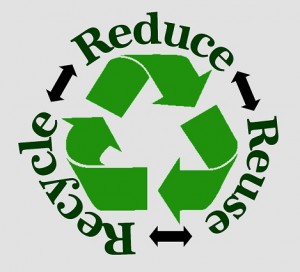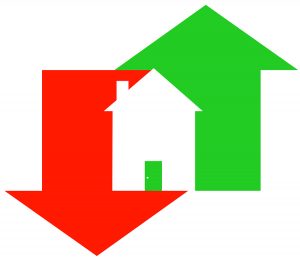The rush is on to leave a smaller footprint – and they’re not talking about a building’s lot size.
July 17, 2007
Canada’s commercial real estate industry, like many other business sectors, is embracing change to make sure its environmental footprint is more eco-friendly.

The industry is now in the thick of efforts to broaden its “green” efforts beyond merely decreasing energy consumption in the vast stock of office buildings across the country.
It’s a key issue because buildings are one of the biggest contributor to the greenhouses gases that are considered responsible for climate change on the planet.
“When people think of global warming, many of them probably think of factory smokestacks and cars,” said Nancy Searchfield, a green buildings expert at Colliers International in Toronto and a board member on the
Canada Green Building Council. “People don’t realize that buildings contribute 30 per cent of greenhouse gases.”
Making sure newly constructed building are “green” is a important objective, she said, but there can be much more of an impact through improving the performance of the billions of square feet of existing commercial space across the country. The greening of buildings has become such a hot issue that large real estate firms are bending over backwards to make sure people know they are concerned about the planet. CB Richard Ellis Group Inc., the huge real estate service firm based in Los Angeles, said recently it will attempt to become “carbon neutral” by 2010. To do that it will cut energy use in it offices, make better use of space, and buy offset credits if necessary.
Perhaps more important than the internal goals, CBRE has set up a task force to help its clients become more energy efficient in the 1.7 billion square feet of office space they occupy around the world. Stefan Ciotlos, executive vice-president of CBRE (Canada) and the Canadian representative on the task force, said the move is “a recognition that the company has a global responsibility, and can be a global influence.”
The idea is to share best practices around the world, he said, and Canada should be able to make a significant contribution because we have a different climate and geography than most other countries.
Many Canadian building owners and managers have made changes, or are considering changes, to ensure their buildings’ operations are more environmentally friendly.
Cheryl Gray, senior vice-president for national real estate services at property manager Bentall Capital LP, says managing energy costs has been a key focus for decades, but with concerns over environmental issues now top of mind, “it has taken on a much more sophisticated context.” Some building owners and tenant are taking a more “holistic” approach to environmental issues, and are not just looking at immediate financial payback, she added.
Environmentally positive changes can include massive retrofits, such as shifting a building’s cooling from an inefficient system to Enwave deep lake water cooling that’s now available in downtown Toronto, Ms. Gray said. But they can also involve much smaller moves, such as improving recycling in tenants’ offices by keeping cellphones and batteries out of the garbage stream, or installing motion sensors so that rooms aren’t lit when not in use.
Some building owners are installing green roofs, planting drought resistant plants for landscaping, or capturing rain water for irrigation. Building managers and owners can also set standards for tenants, encouraging them to use more recycled materials in constructing offices.
“There are lots of opportunities. The list is endless if you really start looking at the different components of a an existing property,” Ms. Gray said.
Colliers’ Ms. Searchfield said many environmentally positive changes are really “low-hanging fruit” that don’t require much of an investment to put in place. Any building manager can shift to “green housekeeping,” for example, using biodegradable cleaning products instead of more toxic materials. And lowering lighting levels is not usually a major retrofit.
One of the side benefits of retrofitting space so it’s more green: Owners may have an easier time attracting tenants, and those tenants will be better able to attract staff, who now sometimes take environmental issues into account when deciding who they want to work for.
Buildings that have made significant environmental progress can now get recognition from Canada’s Building Owners and Managers Association, which has created the “Go Green” program to certify properties that meet 10 environmental best practices.
BOMA’s Go Green Plus is more rigorous, and sets measured benchmarks for energy consumption, water usage, emissions, waste reduction etc. About 66 buildings in Canada have reached that level.
YOU DO THE MATH: A CASE STUDY IN GREEN RETROFITTING
The poster child for environmentally retrofitted older buildings is a cluster of three mid-sized office towers in San Jose, Calif., owned by software maker Adobe Systems Inc.
The connected towers house about one million square feet of space, and were built between 1996 and 2003. The retrofit was completed last year.
Adobe has achieved enormous energy savings through a wide range of programs, some almost unbelievably simple, said Pierre Bergevin, president of Cushman & Wakefield Facilities Management in Toronto. His firm’s U.S. arm worked with Adobe and the U.S. Green Building Council to make the changes.
Adobe spent $1.4-million (U.S.) on the project. But it got $389,000 in rebates from governments and its electrical supplier, and saved almost $1.2-million in operating costs in the first year – meaning full payback came in less than 12 months.
Among the changes: 45 energy management projects, including systems that shut power off automatically when not needed, and lower-energy lighting, saved almost $900,000 a year.
Parking garage fans were reprogrammed so they didn’t run all the time, but only when needed. The cost was less than $200; the annual savings about $67,000.
Drought resistant plants replaced non-native species, reducing landscape irrigation costs by about 76 per cent.
Automatic faucets and waterless urinals were installed in bathrooms, helping to reduce overall water use by 22 per cent.
Lighting systems for exit signs were changed to LEDs
Recycling and composting diverted more than 85 per cent of waste, contributing to waste management savings of about $137,000 a year.
Richard Blackwell


